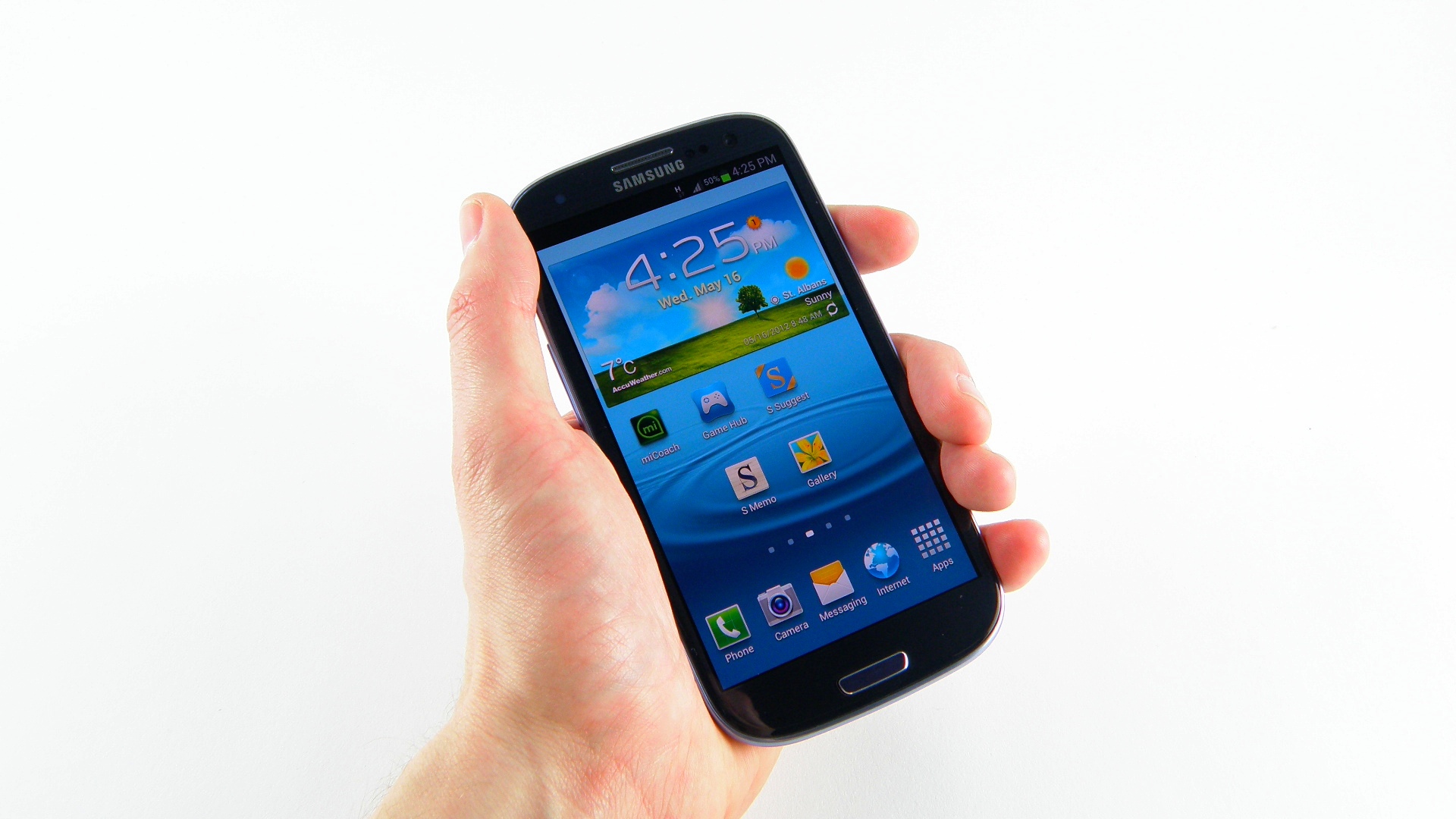TechRadar Verdict
What was the best smartphone in the world is still decent, but we'd recommend strongly looking the S4 before buying.
Pros
- +
Excellent battery life
- +
Superb screen
- +
Quad core speed
- +
Top media management
Cons
- -
Subjective design
- -
S Voice not optimised
Why you can trust TechRadar
Update: With the update to Android 4.1 Jelly Bean, not only has the Galaxy S3 been given a speed boost; there's also a host of other goodies thrown in as well.
It's mostly changes to the interface that have been brought with the new update, but there are a few other areas that have been updated with the new breed of TouchWiz, so we've spent a few weeks checking them all out.
Samsung has made a big deal about this new phone, not only choosing to launch it at big and glitzy event around the globe but also claiming nearly 10 million pre-orders before it's even launched.
The price is pretty palatable for a top-end phone – the likes of Kogan are offering imported models for as little as AUD$499, which is already much, much cheaper than any iPhone would ever launch for.
And there are even cheaper deals - it can be had for $46 per month from iPrimus with no upfront cost... you can probably find it even cheaper online but it's a very low tariff level for a top end phone to launch for.
But let's get down to the main question – is this the phone you should be spending your hard-earned cash on?
Design
The Samsung Galaxy S3 is, according to Samsung anyway, 'inspired by nature – it sees, listens, responds, and allows you to share the greatest moments'.
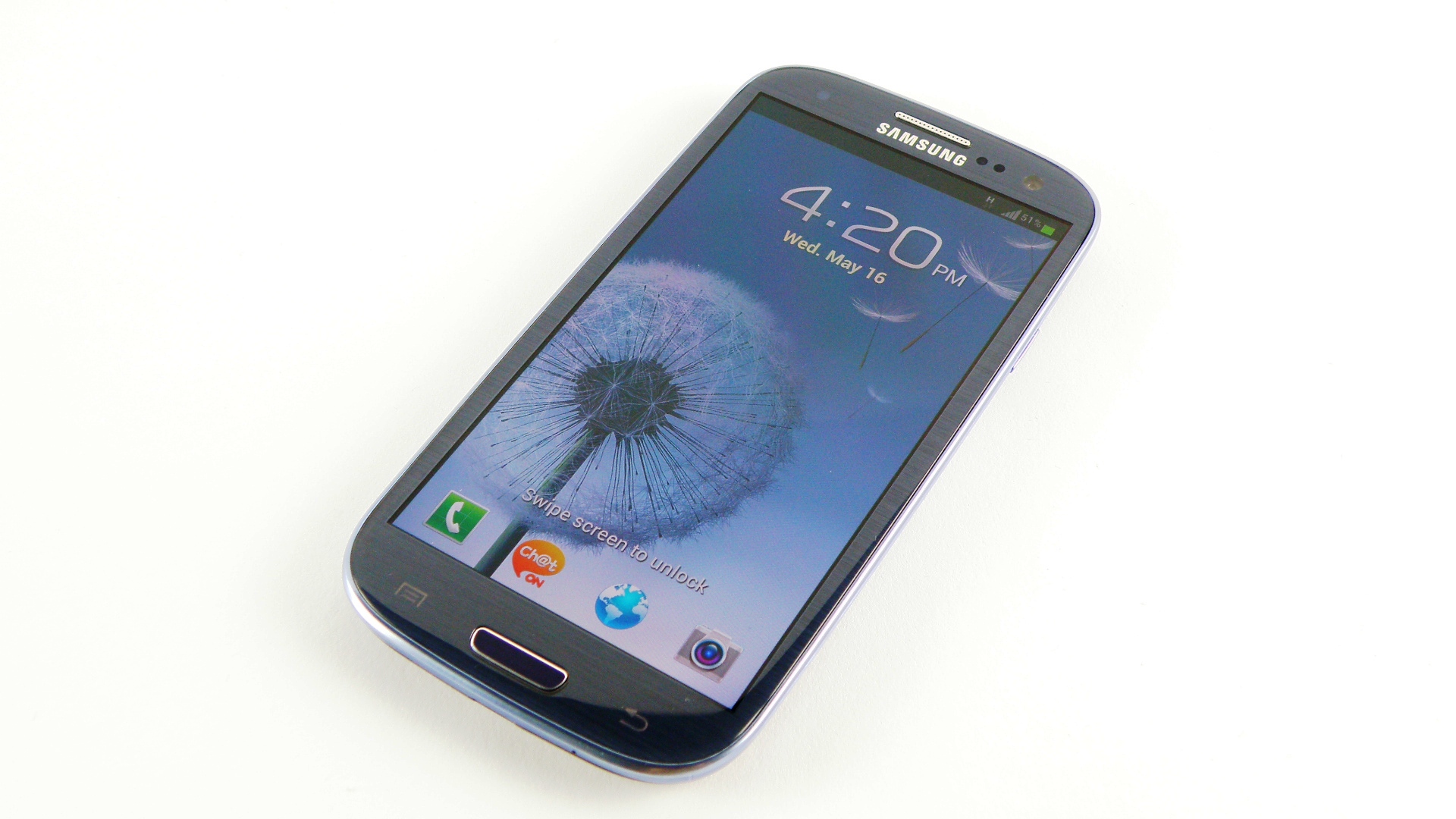
While this is all a little hyperbolic, the nature theme is certainly present when you handle the phone for the first time.
Brushed polycarbonate – you've got a choice of 'Marble White' and 'Pebble Blue' – adorns the large device, which runs in with dimensions of 136.6 x 70.6 x 8.6mm, despite still having to pack in a 4.8-inch Super AMOLED HD screen.
We'll lay it out right now: the plastic feeling of the Galaxy S3 won't appeal to all. It feels very lightweight (despite tipping the scales at 133g) in the hand, and some people will read this as feeling a little cheap.
However, it's exactly the same sensation as we found on the Galaxy S2, and given the silly numbers of sales that had, we think there's more than a market for a phone that you'll barely notice in your pocket most of the time.
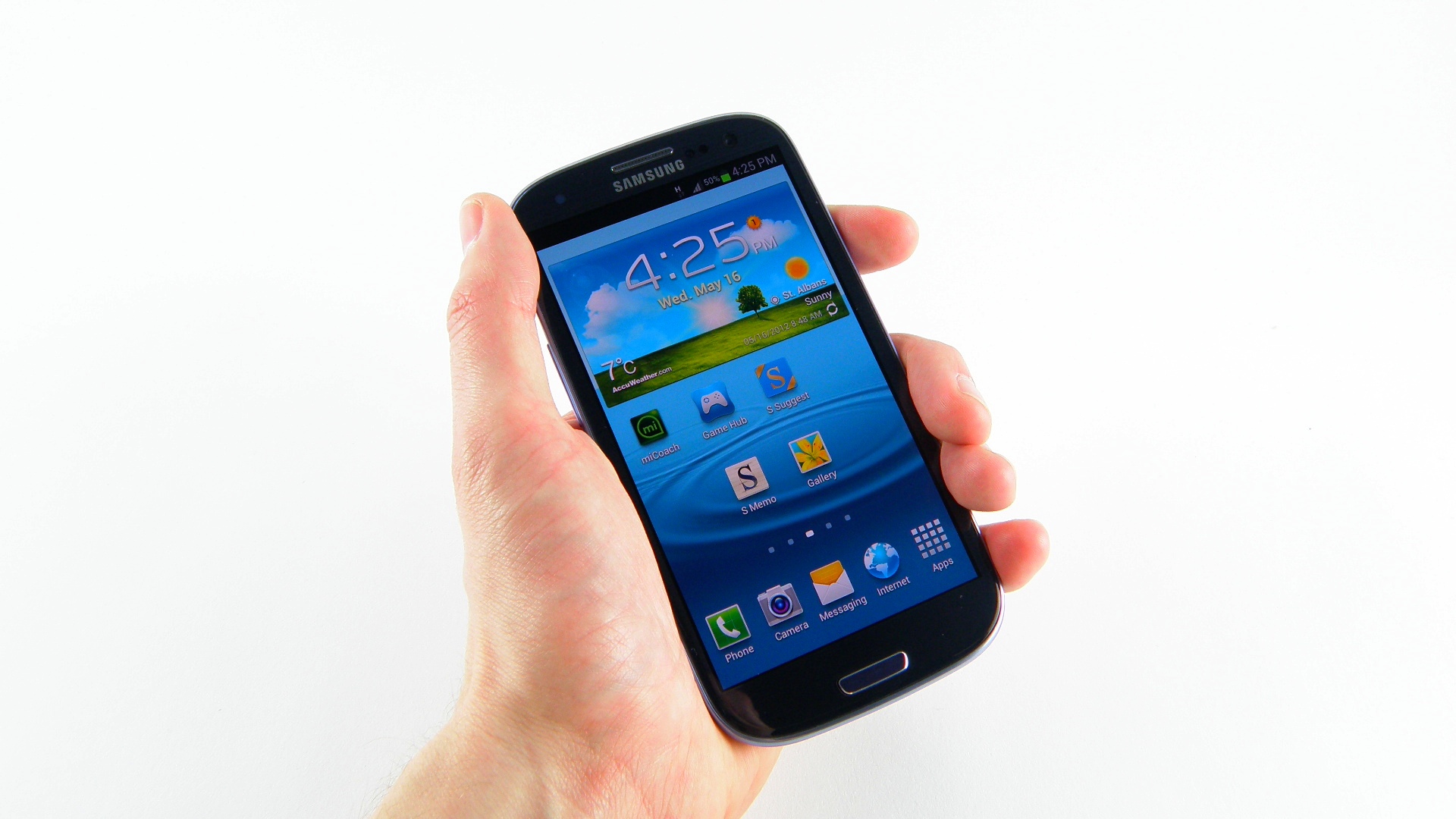
But we'll be very clear on this - the Galaxy S3 is not a cheap-feeling phone. It's got a really solid Gorilla Glass 2 front, a well-packaged interior and a more robust battery cover. It's polycarbonate rather than bog-standard plastic, although we're not sure some people will like the more rounded nature of the design.
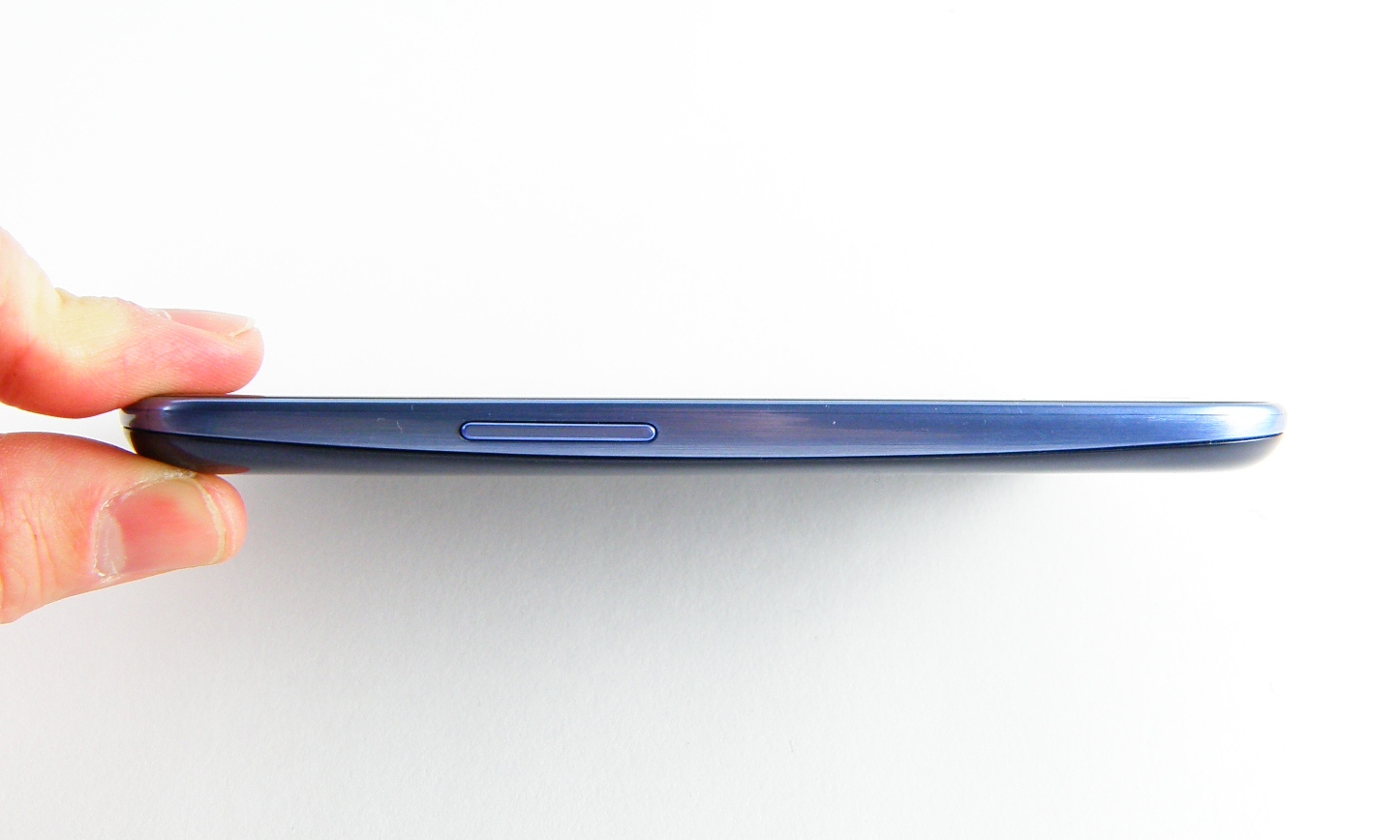
However, despite being made of similar material, there's no doubt that the One X feels more premium in the hand thanks to being a touch more weighty… there's something about something so large being so light that some will find disconcerting.
Amendment: the HTC One X is actually 3g lighter than the S3, but despite carrying both around at once, the S3 still felt lighter, which shows the way texture can affect the way a phone feels in the hand.
There's no doubt in our minds that the Pebble Blue offering is the much more attractive option, as the Marble White looks similar to a low-end Galaxy Mini or similar – the brushed effect is really necessary.
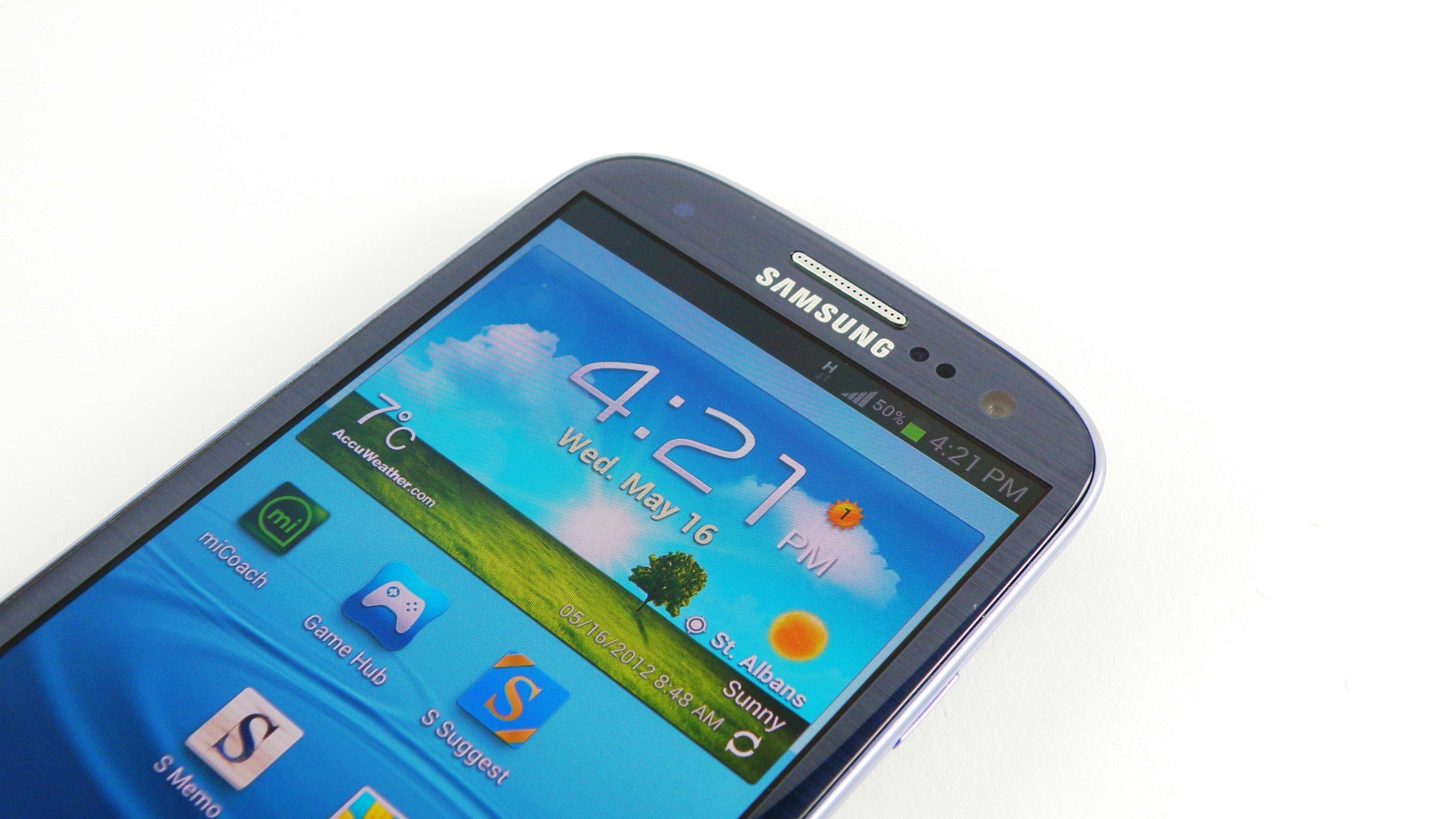
Compared to rest of the Galaxy line, the S3 has more in common with the original Galaxy S than the S2, with curved edges the theme in the design language. The home button has also been elongated, although the same menu and back buttons remain from the prequel.
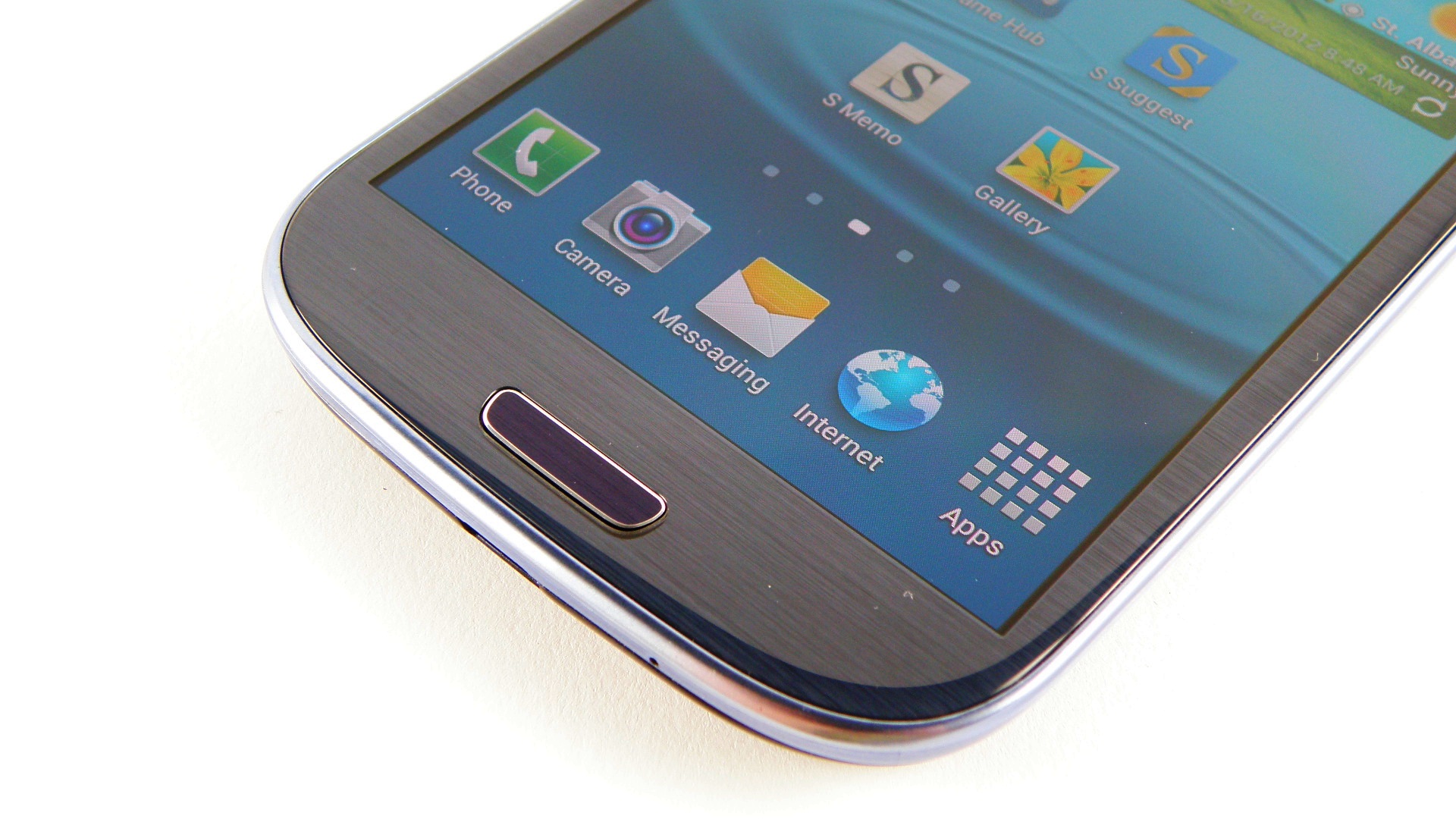
Overall, the effect is much more like the Samsung Galaxy Nexus than anything else – rounded edges, HD screen but with a more minimal bezel to really accentuate the larger screen in the hand.
The button design around the phone has been well thought out in our opinion - for a phone this big it's very difficult to make all the keys accessible, so putting the lock button on the right-hand side rather than the top makes a large degree of sense.
The addition of the lozenge-shaped home button, and its softkey 'Back' and 'Menu' buttons are great additions in our eyes, as it means contextual menus can be found easily without needing to mess around looking for the on-screen icon.
The volume up and down button is parallel to the lock key on the left-hand side of the phone, and also within easy reach when holding the Galaxy S3 in the hand.
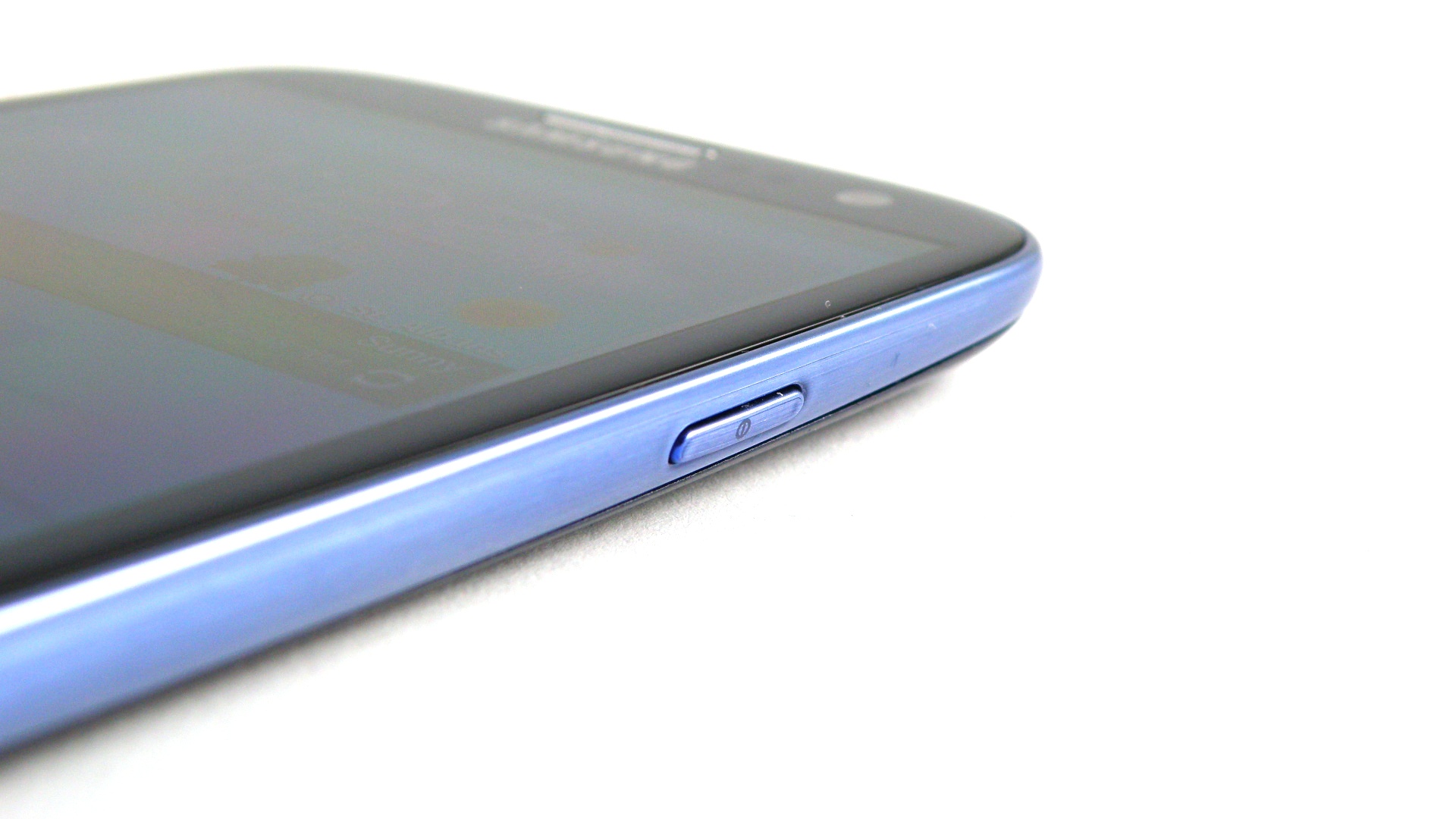
The microUSB slot is placed at the bottom of the phone - easy to find with a charger but it will be interesting to see how it's used when placed in docks and car cradles.
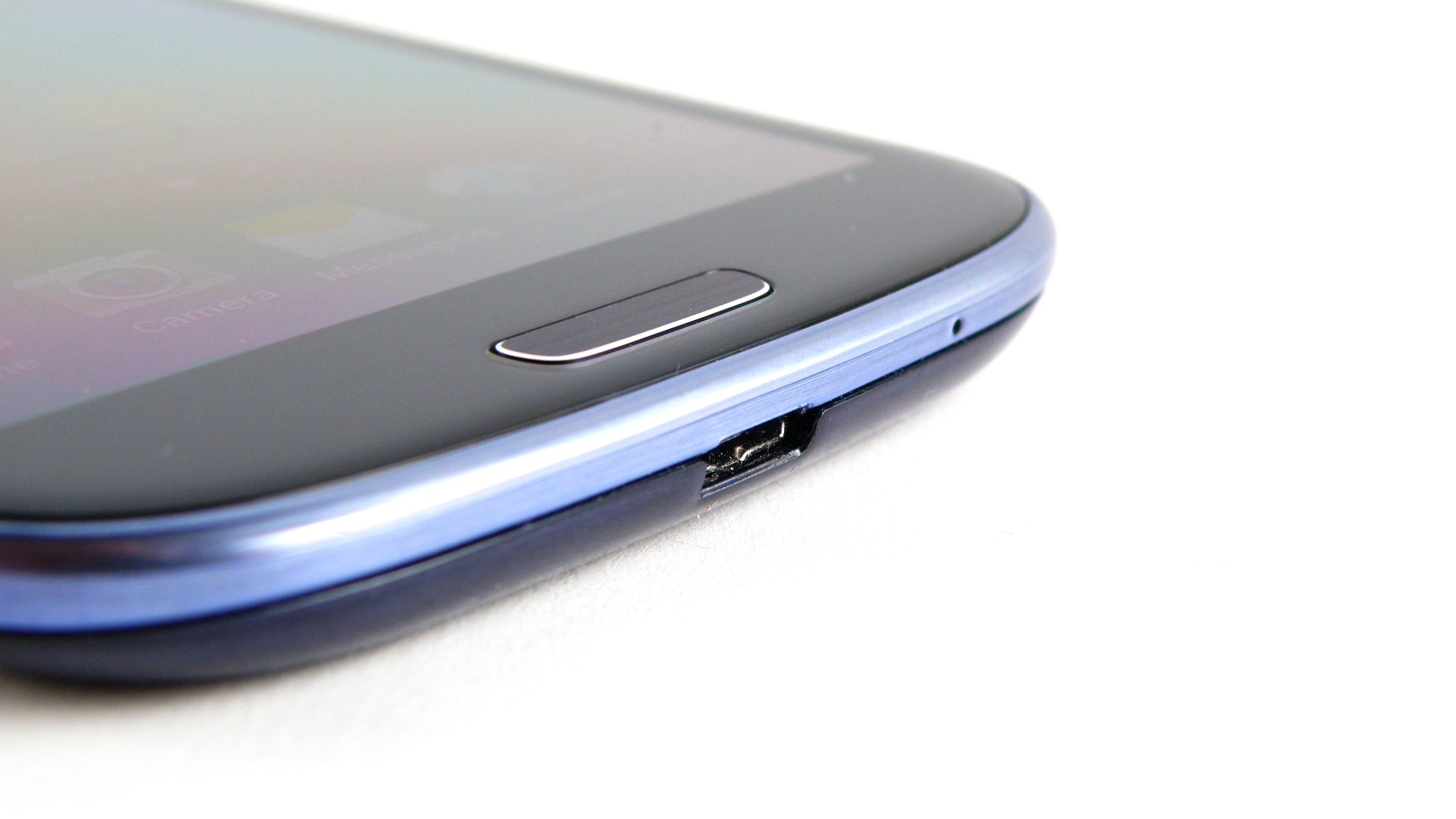
The battery cover is also made of the same polycarbonate material as the rest of the body. Yes, you read that right - the battery cover is removable!
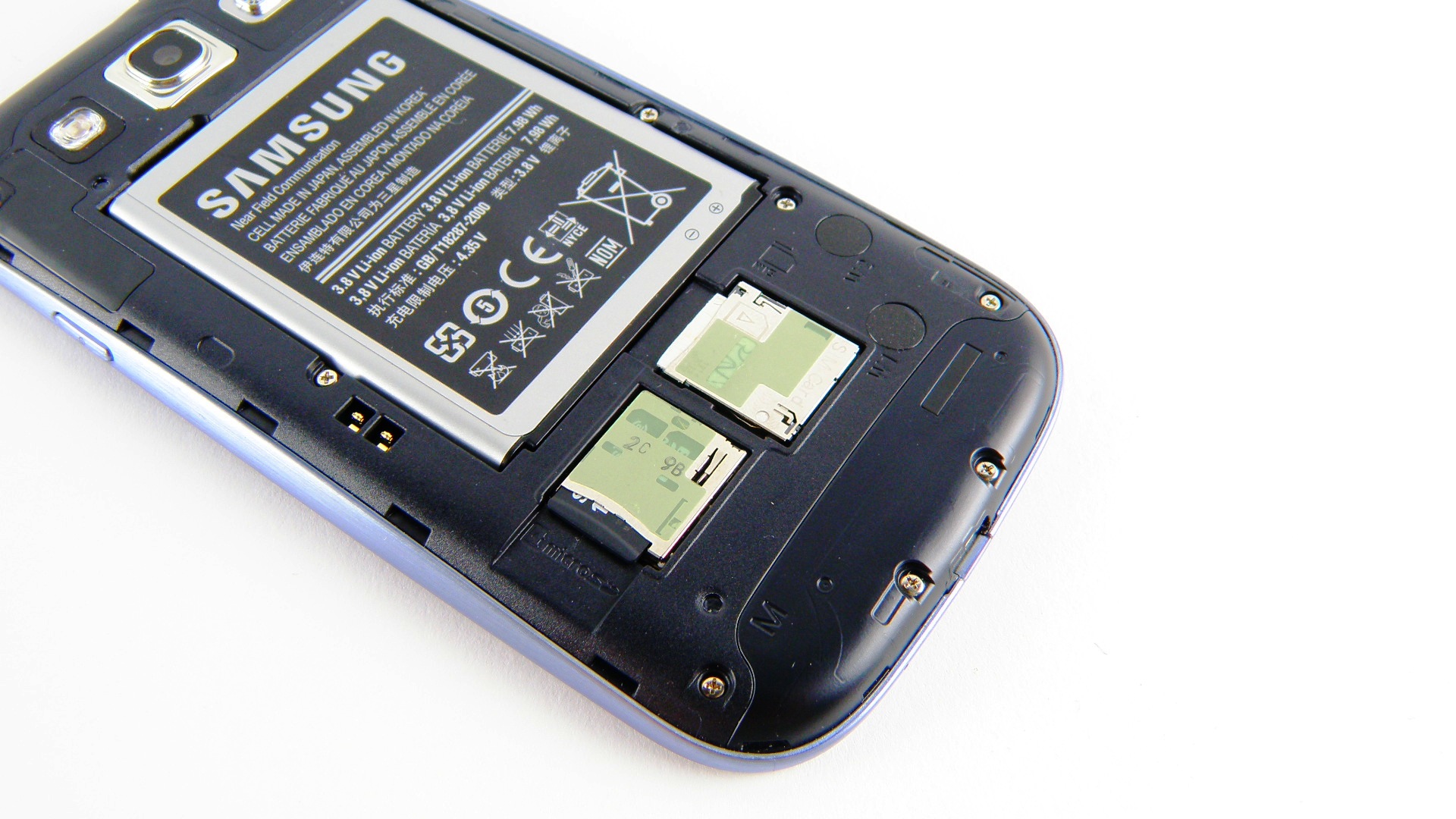
This means that not only can switch the battery in and out - a key consideration for many people - there's also a cheeky surprise in the shape of a microSD slot next to the microSIM port. Expandable memory? This just gets better and better.
This means that theoretically you'll be able to have a 128GB-capacity Samsung Galaxy S3 if you combine the top spec of internal memory (64GB) with the largest microSD card around at the moment (64GB)... making it a mouth-watering prospect for those that love a spot of media.
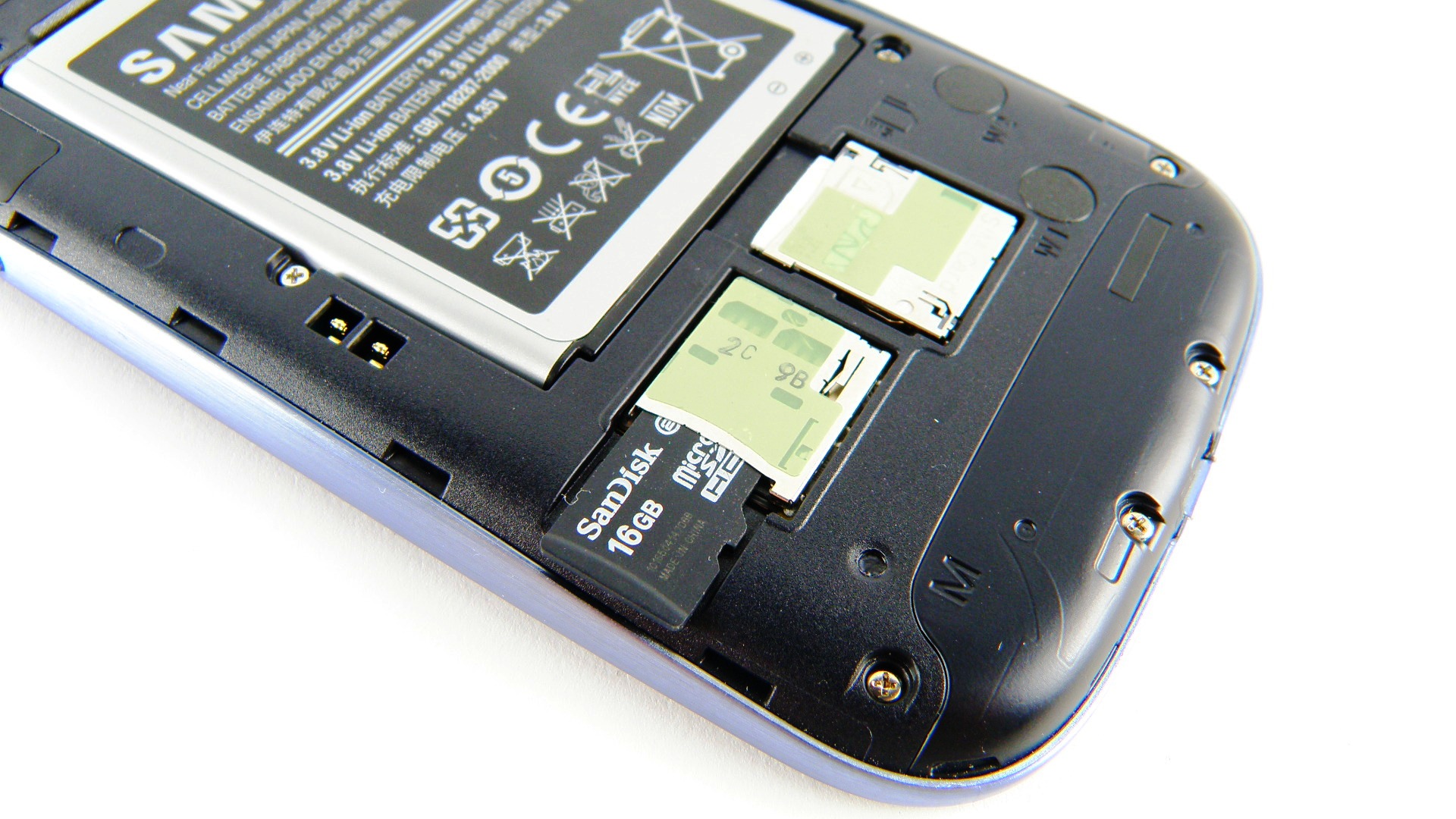
Sure, there are stats that say only 10% of users regularly go over 16GB of storage, but there's always the lower end version of the Galaxy S3 for that... but with HD movie downloads becoming far more prevalent, plus the influx of HD apps, we're thinking more space is an excellent idea.
But overall, in the hand, the Samsung Galaxy S3 feels superb. The design contours well against the palm, and while the screen size may be a little big for some (you'll need a bit of shuffling to reach the upper section of the screen) it's definitely useable in the hand.
So in short: if you don't mind a slightly lighter-feeling polycarbonate shell and you like big HD screens in your pocket, this is a phone definitely worth checking out.

Gareth has been part of the consumer technology world in a career spanning three decades. He started life as a staff writer on the fledgling TechRadar, and has grew with the site (primarily as phones, tablets and wearables editor) until becoming Global Editor in Chief in 2018. Gareth has written over 4,000 articles for TechRadar, has contributed expert insight to a number of other publications, chaired panels on zeitgeist technologies, presented at the Gadget Show Live as well as representing the brand on TV and radio for multiple channels including Sky, BBC, ITV and Al-Jazeera. Passionate about fitness, he can bore anyone rigid about stress management, sleep tracking, heart rate variance as well as bemoaning something about the latest iPhone, Galaxy or OLED TV.
